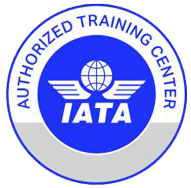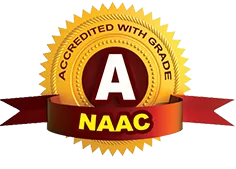Course Outcome
Course Outcome of BSc Mathematics
SEMESTER 1
• Prove results involving divisibility, greatest common divisor, least common multiple and a few applications.
• Understand the theory and method of solutions of LDE.
• Solve linear congruent equations.
• Understand the concept of number theoretic functions.
SEMESTER 2
• Introduce the fundamental ideas of limit, continuity and differentiability
• Familiarise basic theorems of differential calculus.
• Apply the concepts and theorems in calculus to draw the graph of a function
• Apply the concept of definite integral to find the area between two curves, volume and arc length.
SEMESTER 3
• To introduce the idea of parametrization of curves, they learn how to calculate the arc length, curvature etc. using parametrization and also the area of surface of revolution of a parametrized plane curve.
• Introduce other coordinate systems which often simplify the equation of curves and surfaces and the relationship between various coordinate systems
• Able to handle vectors in dealing with the problems involving geometry of lines, curves, planes and surfaces in space and have acquired the ability to sketch curves in plane and space given in vector valued form.
SEMESTER 4
- Study of linear systems of equations, vector spaces, and linear transformations
- Understand the relationship among the solutions of a given system of linear equations and some important subspaces associated with the coefficient matrix of the system.
- Understand dimension theorem for matrices.
- Learn a few fundamental results involving diagonalization and eigenvalues which enable them to check whether diagonalization is possible.
- An opportunity to learn the fundamentals of linear algebra by capturing the ideas geometrically, by justifying them algebraically and by preparing them to apply it in several different fields such as data communication, computer graphics, modelling etc.
SEMESTER 5
• The idea of structural similarity, the notion of cyclic group, permutation group , various examples and very fundamental results in the areas are also explored.
• To locate the region of solutions for a general polynomial equations.
• To know about sequences ,their limits, several basic and important theorems involving
• sequences and their applications.
• To understand some basic topological properties of real number system such as the concept of open and closed sets, their properties, their characterization and so on.
• To get a rigorous introduction to algebraic, geometric and topological structures of complex number system, functions of complex variable, their limit and continuity and so on.
• Rich use of geometry, comparison between real and complex calculus-areas where they agree and
• where they differ, the study of mapping properties of a few important complex functions exploring the
• underlying geometry.
• Understand the concept of interpolation and also learn some well known interpolation
techniques.
• Understand a few techniques for numerical differentiation and integration and also realize
their merits and demerits.
• Find out numerical approximations to solutions of initial value problems and also to
• understand the efficiency of various methods.
• understand the drawbacks of geometric methods
• Convert certain related problems, not directly solvable by simplex method, into a form that
• can be attacked by simplex method.
• Understand duality theory, a theory that establishes relationships between linear programming problems of maximization and minimization
• Understand game theory & solve transportation and assignment problems by algorithms that take
• advantage of the simpler nature of these problems.
• Recognise and classify conics.
• Understand Kleinian view of Euclidean geometry.
• Understand affine transformations, the inherent group structure, the idea of parallel projections and the basic properties of parallel projections.
• Understand the fundamental theorem of affine geometry.
• Learn to solve polynomial equations upto degree four.
SEMESTER 6
prove or disprove continuity of functions using this criteria.
• Understand several deep and fundamental results of continuous functions on intervals such
as boundedness theorem, maximumminimum theorem, intermediate value theorem,
preservation of interval theorem and so on.
• Realise the difference between continuity and uniform continuity and equivalence of these
ideas for functions on closed and bounded interval.
• Understand the significance of uniform continuity in continuous extension theorem.
• Develop the notion of Riemann integrability of a function using the idea of tagged partitions
and calculate the integral value of some simple functions using the definition.
• Understand a few basic and fundamental results of integration theory.
• Formulate Cauchy criteria for integrability and a few applications of it. In particular they learn to use Cauchy criteria in proving the non integrability of certain functions. Understand classes of functions that are always integrable
• Understand the notion of improper integrals, their convergence, principal value and evaluation.
• Learn the properties of and relationship among two important improper integrals namely beta and gamma functions that frequently appear in mathematics, statistics, science and engineering.
function and construct examples.
• To understand necessary and sufficient condition for checking analyticity also know of harmonic functions and their connection with analytic functions
• To know a few elementary analytic functions of complex analysis and their properties.
• To understand definition of complex integral, its properties and evaluation.
• To know a few fundamental results on contour integration theory such as Cauchy’s
theorem,Cauchy-Goursat theorem and their applications.
• To understand and apply Cauchy’s integral formula and a few consequences of it such as
Liouville’s theorem, Morera’s theorem and so forth in various situations.
• To see the application of Cauchy’s integral formula in the derivation of power series
expansion of an analytic function and know a more general type of series expansion analogous to power series expansion
• To understand how Laurent’s series expansion lead to the concept of residue, which in turn provide another fruitful way to evaluate complex integrals and, in some cases, even real integrals.
• To see another application of residue theory in locating the region of zeros of an analytic
function.
representation using graph and contour diagrams and formulate and work on the idea of limit and continuity for functions of several variables.
• Understand the notion of partial derivative, their computation and interpretation also calculating partial derivatives.
• Get the idea of directional derivative, its evaluation, interpretation, and relationship with
partial derivatives and concept of gradient, a few of its properties, application and interpretation.
• Understand the use of partial derivatives in getting information of tangent plane and normal
Line and Calculate the maximum and minimum values of a multivariable function using second
derivative test and Lagrange multiplier method.
• Find a few real life applications of Lagrange multiplier method in optimization problems.
Address the practical problem of evaluation of double and triple integral using Fubini’s
theorem and change of variable formula.
• Realize the advantage of choosing other coordinate systems such as polar, spherical,
• cylindrical etc. in the evaluation of double and triple integrals and See a few applications of double and triple integral in the problem of finding out surface area, mass of lamina, volume, centre of mass and so on.
• Understand what an ODE is, what it means by its solution, how to classify DEs, what it means by an IVP and so on. And to solve DEs that are in linear, separable and in exact forms and also to analyse the solution.
• Realize the basic differences between linear and non linear DEs and also basic results that guarantees a solution in each case and a method to approximate the solution successively of a first order IVP.
• Familiar with the theory and method of solving a second order linear homogeneous and nonhomogeneous equation with constant coefficients and find out a series solution for homogeneous equations with variable coefficients near ordinary points.
• Acquire the knowledge of solving a differential equation using Laplace method which is especially suitable to deal with problems arising in engineering field. And learn the technique of solving partial differential equations using the method of separation of variables







